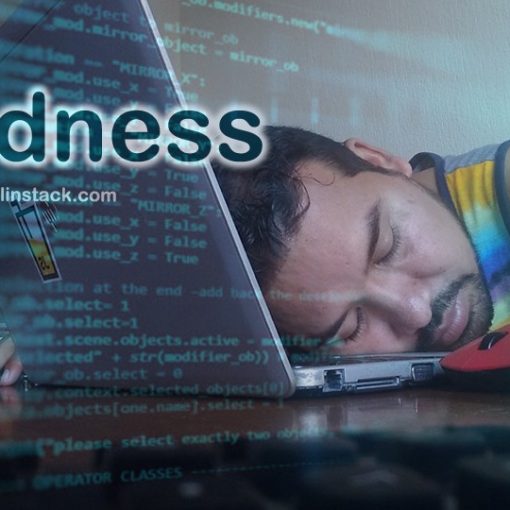For developers and new remote workers… Work as you usually do at the office with the benefits of doing it from home – blarz
In a blink of an eye, COVID-19 hacked the world, unfortunately. It forcefully changed the way we normally work. Certainly, there were many of us who were already working from home in one way or another. Probably, a percentage of us were working one, two, or three days a week from home offices and another percentage were fully working from home.
Now, the entire world is talking and trying to face this battle. The good news is there are many people encouraging us and giving us advice on how to be more productive, healthy — avoiding anxiety, depression, burnout, and stress. I’m just another person doing the same thing. At this time, what we need is as many reminders as we can have. As you know, we don’t know exactly how long this journey will be, so the aim of this article is to give you a few essential tools and the best practices now that you’re working from home.
Working From Home Doesn’t Work the Same for Everyone
I know very well that what works for me might not work for you. Along the way, through more than three years of working from home, I’ve realized that our experiences at home are different. So some advice might apply to you, and other advice won’t. There are many variables when you work from home. It’s not the same battle for those who are parents, and advice for those who have a comfortable space can’t always be used by those who have a small room (or even don’t have a dedicated room).
However, whatever the case is, there are some essential tools and best practices that can be really helpful when working from home. The idea of all of this is to simplify your stay at home and to give you tools and facts that’ll help y u work as you usually do at the office with the benefits of a stay at home. So without further ado, let’s review them.
Time Management and Productivity
Todoist
This app isn’t just a to-do list. It’s a complete tool to manage your life and work. One of the features I love is the fact that it can work offline so you don’t need a connection to continue using it. Furthermore, it allows you to see tangible progress so you can see how small steps at a time add up to your biggest ambitions and goals. It’s definitely one of my favorite tools.
Clockify
If you’re not tracking what you’re doing, you’re a bot without north. The interesting thing about tracking your work is it doesn’t just help you to get things done, but it also has the power to show you what things are causing your poor productivity.
Clockify will help you as a time tracker. You can start and stop as you work, or, if you prefer, you can enter your hours manually. Plus, it offers you a dashboard to give you an idea of where you spend your time and what things you’re working on.
Cold Turkey
In my opinion, this is a really powerful tool with a dose of discipline built-in. Productivity isn’t possible if you fall down with the temptation to check your social-network updates and phone notifications every 5-10 minutes. Cold Turkey boosts your productivity and reclaims your time. There’s no way to cheat it. Once you block something, there’s no turning back.
Collaboration and Calls
Pair programming
The Live Share extension for Visual Studio Code is the most useful tool I’ve come across so far. It’s the best tool for remote collaboration, code review, or pair programming. It allows us to work in a collaborative way. What you need to do is just share your session with another developer, and you’ll be allowing additions to your code. It has the same functionality of Google Docs.
Keep in mind that all of this is done in real-time. Furthermore, Live Share not only allows us to share our code, but you can also add comments, chat, use a shared terminal, and have audio calls if you want. It puts all the power of live editing in your hands.
Eliminate/reduce background noise with Krisp
Not everybody has the opportunity to have a silent space to work. Some of you can hear the dogs barking outside, the baker yelling, and your neighbors listening to music too loud. Plus, you might not have really good noise-canceling headphones for when you’re on a call.
For those who have the same situation as me, this tool will help a lot. I’m talking about Krisp. It’s a tool that offers to eliminate your background noise. You’ve probably been asking yourself if it’s free. Not totally, of course; however, with the free version, you have up to 120 minutes a week for speaking and listening.
Tips and Best Practices
Planning ahead of time
Your day doesn’t start today. Your day should have started last night, at least. Before you go to bed, you need to have some clarity about tomorrow’s task prioritization and the effort of time each task will require. This will put you one step ahead.
Communication — Slack
For people in the software development industry, one of the most used communication tools is Slack, it isn’t? If you set the right status on it, you’ll allow those who are trying to reach out to you directly save time. Just updating the status will be super helpful for your team.
Get started early
If you followed the first tip, you planned your next day ahead of time, right? What’s even better is to get things done by getting started super early. This will give you a few hours ahead of the crowd. And it won’t just put you a few hours ahead, but it’ll also be the most productive hour of your day.
Stay focused, and avoid stuff that distracts you
As I mentioned earlier in this article, everybody has different life situations. For instance, you may live alone or have pets. Your room may be small, or you might share your room. You might live in the countryside or the city, where you’re more likely to have someone visit you
Despite all that, we need to stick to our planning and schedules. Avoid any distractions during the time you schedule for work.
Use your own Podomoro Technique
The original Podomoro Technique is a time-management method. Basically, it uses a timer to break down work into intervals. These intervals usually are of 25 minutes.
However, my advice is you need to set the time and intervals that work best for you. For instance, I’d say I’m not able to get tangible work done in 25 minutes, so I’ll set it for 40 minutes instead. It all depends on your kind of work and how much you know about yourself.
Make break time clear
If this is your first time working from home, you may feel stress or burnout caused by not taking clear breaks. The idea is simple: Take your break as you would in an office.
Enjoy the time with your loved ones
Sometimes during the day, my son tells me, “Dad can we play for two minutes?” My answer is always yes if I don’t have a meeting or something on which I’m really focused on. Spending a deliberate five minutes with your loved ones won’t affect your productivity. On the contrary, it could help you to get things done.
20 minutes of working out
This is one of my favorites. It’s so powerful. It’s incredible the benefits for your health of just exercising for 20 minutes after a long, full-time work-from-home day. I try to work out at least four times a week after my workday. It resets my mind and fills my body with new energy.
Be Strong, stay safe. We will overcome this crisis together
Thanks for reading. I really appreciate your priceless time!





